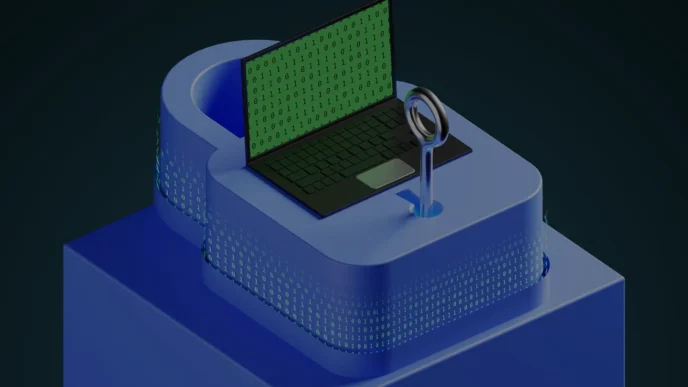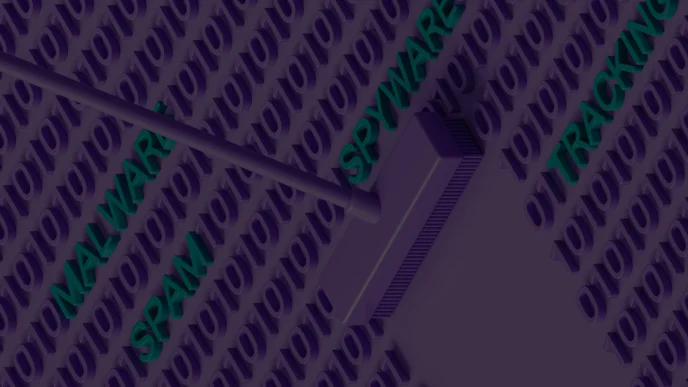WPA3 encryption is widely promoted as the next-generation protocol for wireless network security. Yet even this improved standard has its vulnerabilities. This article delves into the technical details of how hackers may crack WPA3 encryption and outlines robust countermeasures. The content is designed to be comprehensive for cybersecurity professionals while remaining accessible to technically inclined readers.
Understanding WPA3 Encryption
WPA3 introduces several improvements over WPA2 by utilizing advanced cryptographic techniques and enhanced authentication methods. At its core, WPA3 employs the Simultaneous Authentication of Equals (SAE) protocol—also known as the Dragonfly Key Exchange—to provide better resistance against brute-force and offline dictionary attacks.
Key Technical Enhancements
- Enhanced Cryptography: WPA3 uses more sophisticated ciphers that make it substantially harder for attackers to succeed with brute-force methods.
- Forward Secrecy: The SAE handshake ensures that even if session keys are compromised, previous communications remain secure.
- Resistance to Offline Attacks: By reducing the data available for offline cracking, WPA3 mitigates the effectiveness of traditional offline password attacks.
Despite these improvements, vulnerabilities still exist. Misconfigurations, weak passphrase choices, and varying vendor implementations can create exploitable attack surfaces.
How Hackers Crack WPA3 Encryption
Analyzing Vulnerabilities
Although WPA3 is built for stronger security, several factors can weaken its defenses:
- Implementation Weaknesses: Variations in how vendors deploy WPA3 can lead to unintended side-channel leaks or other security gaps.
- Weak Passphrases: While the SAE protocol is robust, the security of a WPA3 network still fundamentally relies on the strength of the chosen passphrase. Weak or commonly used passwords can compromise even the best encryption.
- Transition Mode Vulnerabilities: Networks that operate in a dual-mode (supporting both WPA2 and WPA3 for backward compatibility) may inadvertently allow an attacker to exploit weaknesses inherent in WPA2, thereby indirectly affecting WPA3 security.
Detailed Attack Methods
Dragonfly Side-Channel Attacks
The Dragonfly handshake, central to WPA3’s SAE protocol, is designed to thwart many traditional attacks. However, research has shown that side-channel leaks—such as variations in processing time or power consumption—might reveal hints about the passphrase. By analyzing multiple handshake instances, attackers can reduce the keyspace, making targeted brute-force attacks more feasible.
Dictionary Attacks on SAE
WPA3 is intended to prevent offline dictionary attacks. Nonetheless, if a network relies on a weak passphrase, attackers may engage in online brute-force attempts. Although WPA3 includes rate-limiting and lockout mechanisms, these measures are less effective if proper passphrase policies are not enforced.
Exploiting Transition Modes
Many networks operate in mixed mode to accommodate older devices that only support WPA2. This dual operation creates potential vulnerabilities. An attacker may force a downgrade from WPA3 to WPA2 or leverage known WPA2 flaws to gain network access, thereby indirectly compromising the stronger WPA3 components.
Advanced Countermeasures and Defense Strategies
Strengthening Passphrase Policies
The simplest yet most effective way to secure a WPA3 network is to use strong, complex passphrases. Consider the following strategies:
- Complex Passwords: Use passphrases of at least 16 characters that mix uppercase and lowercase letters, numbers, and symbols.
- Regular Updates: Periodically change the network passphrase to reduce the risk of long-term exploitation.
- Password Managers: Encourage the use of password managers to generate and store strong, random passwords securely.
Firmware and Device Updates
Regular updates to firmware and device software are crucial in mitigating vulnerabilities:
- Patch Management: Stay current with vendor releases to patch known flaws.
- Vendor Collaboration: Work with device manufacturers to ensure that any discovered security issues are promptly addressed.
Network Segmentation and Monitoring
Implementing a layered network architecture can reduce the risk of a single breach leading to widespread network compromise:
- VLAN Segmentation: Isolate critical systems from guest or less secure networks to limit potential damage.
- Intrusion Detection Systems (IDS): Deploy IDS to monitor network traffic for unusual patterns indicative of an attack.
- Log Analysis: Regularly audit logs to detect anomalies, such as repeated authentication failures or unauthorized access attempts.
Enhanced Authentication Measures
To further bolster security, integrate additional authentication methods alongside WPA3:
- RADIUS Integration: Use WPA3 Enterprise with RADIUS servers for an extra layer of verification.
- Multi-Factor Authentication (MFA): Combine WPA3 with MFA solutions like biometric verification or certificate-based authentication for high-security environments.
Real-World Impacts and Case Studies
Case Study: Exploiting SAE Side-Channel Vulnerabilities
In controlled tests, researchers demonstrated that slight timing differences during the Dragonfly handshake could potentially leak partial information about a passphrase. Although practical exploitation in live environments is challenging due to robust rate-limiting measures, the research highlights the risks associated with using weak passphrases and the need for continuous security assessments.
Table: Comparison of WPA2 and WPA3 Security Features
| Feature | WPA2 Vulnerability | WPA3 Mitigation |
|---|---|---|
| Handshake Protocol | Vulnerable to offline attacks | SAE handshake with forward secrecy |
| Dependence on Passphrase | Strongly reliant on user’s password choice | Improved but still vulnerable if weak |
| Backward Compatibility | N/A | Dual-mode operation can allow downgrade |
| Rate Limiting | Often lacking in older systems | SAE incorporates rate-limiting measures |
| Implementation Consistency | Standardized but outdated encryption | Varies by vendor; requires regular updates |
Table 1: A detailed comparison highlighting key differences in security between WPA2 and WPA3.
Figure 1: WPA3 Encryption Architecture Diagram
Insert an illustrative diagram showing the flow of the WPA3 SAE handshake, key derivation processes, and authentication sequence. This diagram aids in visualizing how data is protected and where potential vulnerabilities may lie.
Best Practices for Cybersecurity Professionals
For cybersecurity experts, a multi-layered defense strategy is crucial when deploying or maintaining WPA3 networks:
- Regular Penetration Testing: Continuously test wireless networks to identify and rectify any security misconfigurations or vulnerabilities.
- Deploy Security Appliances: Utilize specialized security devices that monitor wireless traffic and alert administrators to suspicious activities.
- Adopt a Zero Trust Model: Assume that all access points and devices are potential vulnerabilities; enforce strict verification protocols for every connection.
- User Education: Ensure that both technical staff and end users understand and adhere to best practices for password management and network security.
Table: Example Pricing for Penetration Testing Tools
| Tool Name | License Type | Approximate Cost (USD) | Key Features |
|---|---|---|---|
| Aircrack-ng | Open Source | Free | Packet capture, WEP/WPA cracking |
| Wireshark | Open Source | Free | Deep packet inspection, protocol analysis |
| Metasploit | Commercial/Free | $2,000+ per year | Exploit development, vulnerability scanning |
| Kismet | Open Source | Free | Wireless network detection, packet sniffing |
Table 2: Pricing and features for popular wireless penetration testing tools used by cybersecurity professionals.
Future Directions in WPA3 Security
The evolving landscape of cybersecurity means that WPA3 will continue to face challenges as new vulnerabilities are discovered and exploited. Future research areas include:
- Improving Handshake Protocols: Refining the SAE handshake to further mitigate side-channel leaks and other potential vulnerabilities.
- Quantum-Resistant Cryptography: Investigating cryptographic techniques that remain secure even against the computational power of quantum computers.
- Standardization Efforts: Working towards uniform implementation standards across different vendors to minimize the risk posed by inconsistent security measures.
- Enhanced User Awareness: Continuous training and education programs to help end users understand and follow best security practices.
Conclusion
Despite its advanced design, WPA3 encryption is not completely immune to attack. Implementation weaknesses, weak passphrase practices, and vulnerabilities introduced by dual-mode operation can all create opportunities for hackers. By understanding these vulnerabilities and applying a robust suite of countermeasures—including strong passphrase policies, regular firmware updates, network segmentation, and enhanced authentication methods—organizations can significantly enhance their wireless network security.
Cybersecurity professionals must remain vigilant, continuously testing and updating their defenses. For those managing WPA3 networks, embracing a layered security strategy is essential to protect sensitive data and maintain network integrity.














